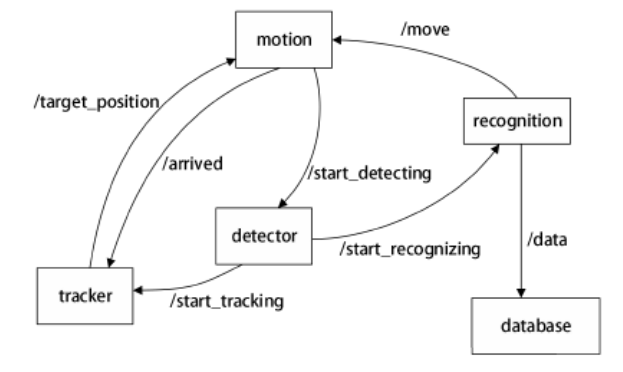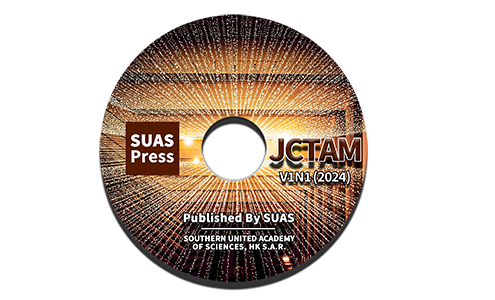Machine Vision-Based Automatic Detection for Electromechanical Equipment
DOI:
https://doi.org/10.5281/zenodo.13830975ARK:
https://n2t.net/ark:/40704/JCTAM.v1n4a02Disciplines:
Computer ScienceSubjects:
Machine VisionReferences:
36Keywords:
Automatic Detection Technology, Machine Vision, Electromechanical Equipment, Economic BenefitsAbstract
With the continuous development of industrial production, efficient and accurate inspection of mechanical equipment has become crucial for production safety, efficiency, and economic benefits. By collecting and analyzing imaging data from electromechanical equipment, effective online monitoring and fault diagnosis can be achieved, enhancing operational efficiency and accuracy while reducing manual intervention. This is a significant research direction in the field of industrial automation control. This paper begins with the fundamental principles of electromechanical equipment testing, conducting an in-depth study of its working mechanisms and providing a detailed discussion on its design and development. The main content includes the system architecture design, functional module design, and key algorithm design, laying a solid foundation for the research on automated testing of electromechanical equipment.
References
Qu, M. (2024). High Precision Measurement Technology of Geometric Parameters Based on Binocular Stereo Vision Application and Development Prospect of The System in Metrology and Detection. Journal of Computer Technology and Applied Mathematics, 1(3), 23–29. https://doi.org/10.5281/zenodo.13366612
Mo, Y., Qin, H., Dong, Y., Zhu, Z., & Li, Z. (2024). Large Language Model (LLM) AI Text Generation Detection based on Transformer Deep Learning Algorithm. International Journal of Engineering and Management Research, 14(2), 154–159. https://doi.org/10.5281/zenodo.11124440
Hao Qin, & Zhi Li. (2024). A Study on Enhancing Government Efficiency and Public Trust: The Transformative Role of Artificial Intelligence and Large Language Models. International Journal of Engineering and Management Research, 14(3), 57–61. https://doi.org/10.5281/zenodo.12619360
Dang, B., Ma, D., Li, S., Qi, Z., & Zhu, E. (2024). Deep learning-based snore sound analysis for the detection of night-time breathing disorders. Applied and Computational Engineering, 76, 109–114. doi:10.54254/2755-2721/76/20240574
Hao Qin, & Li, Z. (2024). Precision in Practice: Enhancing Healthcare with Domain-Specific Language Models. Applied Science and Engineering Journal for Advanced Research, 3(4), 28–33. https://doi.org/10.5281/zenodo.13253336
Li, S., Dong, X., Ma, D., Dang, B., Zang, H., & Gong, Y. (2024). Utilizing the LightGBM algorithm for operator user credit assessment research. Applied and Computational Engineering, 75(1), 36–47. doi:10.54254/2755-2721/75/20240503
Ma, D., Li, S., Dang, B., Zang, H., & Dong, X. (2024). Fostc3net: A lightweight YOLOv5 based on the network structure optimization. Journal of Physics: Conference Series, 2824(1), 012004. doi:10.1088/1742-6596/2824/1/012004
Wang, D. (Ed.). (2016). Information Science and Electronic Engineering: Proceedings of the 3rd International Conference of Electronic Engineering and Information Science (ICEEIS 2016), January 4-5, 2016, Harbin, China. CRC Press.
Tao, Y. (2023, October). SQBA: sequential query-based blackbox attack. In Fifth International Conference on Artificial Intelligence and Computer Science (AICS 2023) (Vol. 12803, pp. 721-729). SPIE.
Tao, Y. (2023, August). Meta Learning Enabled Adversarial Defense. In 2023 IEEE International Conference on Sensors, Electronics and Computer Engineering (ICSECE) (pp. 1326-1330).
Zhai, H., Gu, B., Zhu, K., & Huang, C. (2023). Feasibility analysis of achieving net-zero emissions in China's power sector before 2050 based on ideal available pathways. Environmental Impact Assessment Review, 98, 106948.
Gu, B., Zhai, H., An, Y., Khanh, N. Q., & Ding, Z. (2023). Low-carbon transition of Southeast Asian power systems–A SWOT analysis. Sustainable Energy Technologies and Assessments, 58, 103361.
Fei, Y., He, Y., Chen, F., You, P., & Zhai, H. (2019). Optimal Planning and Design for Sightseeing Offshore Island Microgrids. In E3S Web of Conferences (Vol. 118, p. 02044). EDP Sciences.
Dan, H. C., Lu, B., & Li, M. (2024). Evaluation of asphalt pavement texture using multiview stereo reconstruction based on deep learning. Construction and Building Materials, 412, 134837.
Dan, H. C., Yan, P., Tan, J., Zhou, Y., & Lu, B. (2024). Multiple distresses detection for Asphalt Pavement using improved you Only Look Once Algorithm based on convolutional neural network. International Journal of Pavement Engineering, 25(1), 2308169.
Dang, B., Zhao, W., Li, Y., Ma, D., Yu, Q., & Zhu, E. Y. (2024). Real-Time Pill Identification for the Visually Impaired Using Deep Learning. arXiv preprint arXiv:2405.05983.
Li, K., Wang, J., Wu, X., Peng, X., Chang, R., Deng, X., ... & Hong, B. (2024). Optimizing Automated Picking Systems in Warehouse Robots Using Machine Learning. arXiv preprint arXiv:2408.16633.
Wu, T., Zaitian, G., Wang, Q., & Gao, F. (2024). Scalable Distance-based Multi-Agent Relative State Estimation via Block Multiconvex Optimization. arXiv preprint arXiv:2405.20883.
Zhao, G., Wu, T., Chen, Y., & Gao, F. (2024). Learning Speed Adaptation for Flight in Clutter. IEEE Robotics and Automation Letters.
Wu, T., Chen, Y., Chen, T., Zhao, G., & Gao, F. (2024). Whole-Body Control Through Narrow Gaps From Pixels To Action. arXiv preprint arXiv:2409.00895.
Bacic, B., Feng, C., & Li, W.(2024, 15-19 Jul.). JY61 IMU sensor external validity: A framework for advanced pedometer algorithm personalisation. In proceedings of International Society of Biomechanics in Sports Conference – ISBS 2024. Salzburg, Austria.
Tao, Y., Jia, Y., Wang, N., & Wang, H. (2019, July). The fact: Taming latent factor models for explainability with factorization trees. In Proceedings of the 42nd international ACM SIGIR conference on research and development in information retrieval (pp. 295-304).
Liu, M., Jin, Y., Lu, Y., Chen, M., Hou, B., Chen, W., ... & Yu, X. (2016). A wellbore stability model for a deviated well in a transversely isotropic formation considering poroelastic effects. Rock Mechanics and Rock Engineering, 49, 3671-3686.
Tao, Y. (2023, August). Meta Learning Enabled Adversarial Defense. In 2023 IEEE International Conference on Sensors, Electronics and Computer Engineering (ICSECE) (pp. 1326-1330). IEEE. Chicago
Yiyi Tao, Yiling Jia, Nan Wang, and Hongning Wang. 2019. The FacT: Taming Latent Factor Models for Explainability with Factorization Trees. In Proceedings of the 42nd International ACM SIGIR Conference on Research and Development in Information Retrieval (SIGIR'19). Association for Computing Machinery, New York, NY, USA, 295–304.
Yiyi Tao, Zhuoyue Wang, Hang Zhang, Lun Wang. 2024. NEVLP: Noise-Robust Framework for Efficient Vision-Language Pre-training.
Wu, T., Zaitian, G., Wang, Q., & Gao, F. (2024). Scalable Distance-based Multi-Agent Relative State Estimation via Block Multiconvex Optimization. arXiv preprint arXiv:2405.20883.
Zhao, G., Wu, T., Chen, Y., & Gao, F. (2024). Learning Speed Adaptation for Flight in Clutter. IEEE Robotics and Automation Letters.
Wu, T., Chen, Y., Chen, T., Zhao, G., & Gao, F. (2024). Whole-Body Control Through Narrow Gaps From Pixels To Action. arXiv preprint arXiv:2409.00895.
Bačić, B., Feng, C., & Li, W. (2024). JY61 IMU SENSOR EXTERNAL VALIDITY: A FRAMEWORK FOR ADVANCED PEDOMETER ALGORITHM PERSONALISATION. ISBS Proceedings Archive, 42(1), 60.
Yu, P., Cui, V. Y., & Guan, J. (2021, March). Text classification by using natural language processing. In Journal of Physics: Conference Series (Vol. 1802, No. 4, p. 042010). IOP Publishing.
Xu, Y., Lin, Y. S., Zhou, X., & Shan, X. (2024). Utilizing emotion recognition technology to enhance user experience in real-time. Computing and Artificial Intelligence, 2(1), 1388-1388.
Luo, M., Zhang, W., Song, T., Li, K., Zhu, H., Du, B., & Wen, H. (2021, January). Rebalancing expanding EV sharing systems with deep reinforcement learning. In Proceedings of the Twenty-Ninth International Conference on International Joint Conferences on Artificial Intelligence (pp. 1338-1344).
VLuo, M., Du, B., Zhang, W., Song, T., Li, K., Zhu, H., ... & Wen, H. (2023). Fleet rebalancing for expanding shared e-Mobility systems: A multi-agent deep reinforcement learning approach. IEEE Transactions on Intelligent Transportation Systems, 24(4), 3868-3881.
Fan, H., Li, K., Li, X., Song, T., Zhang, W., Shi, Y., & Du, B. (2019). CoVSCode: a novel real-time collaborative programming environment for lightweight IDE. Applied Sciences, 9(21), 4642.
Sun, Y., & Ortiz, J. (2024). Machine Learning-Driven Pedestrian Recognition and Behavior Prediction for Enhancing Public Safety in Smart Cities. Journal of Artificial Intelligence and Information, 1, 51-57.

Downloads
Published
How to Cite
Issue
Section
ARK
License
Copyright (c) 2024 The author retains copyright and grants the journal the right of first publication.

This work is licensed under a Creative Commons Attribution 4.0 International License.


















